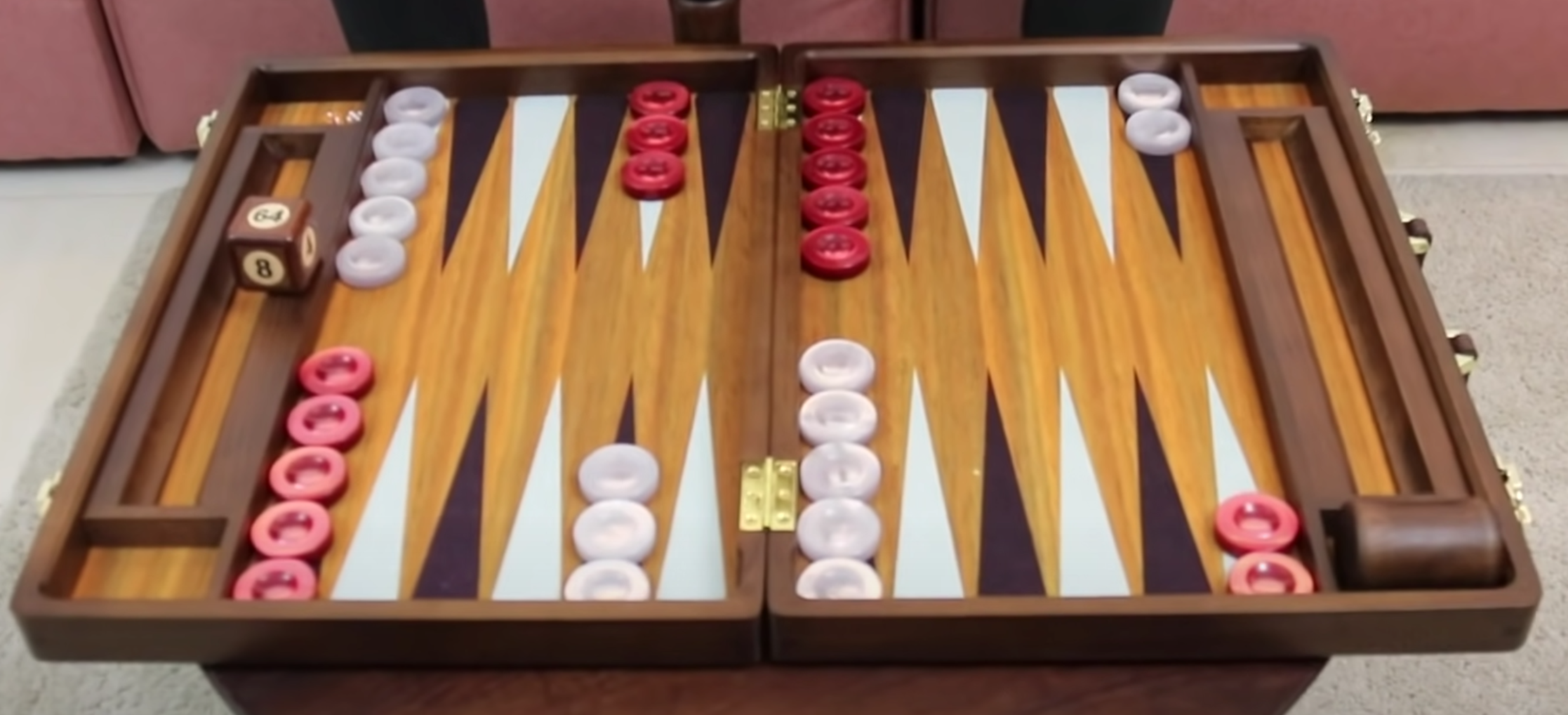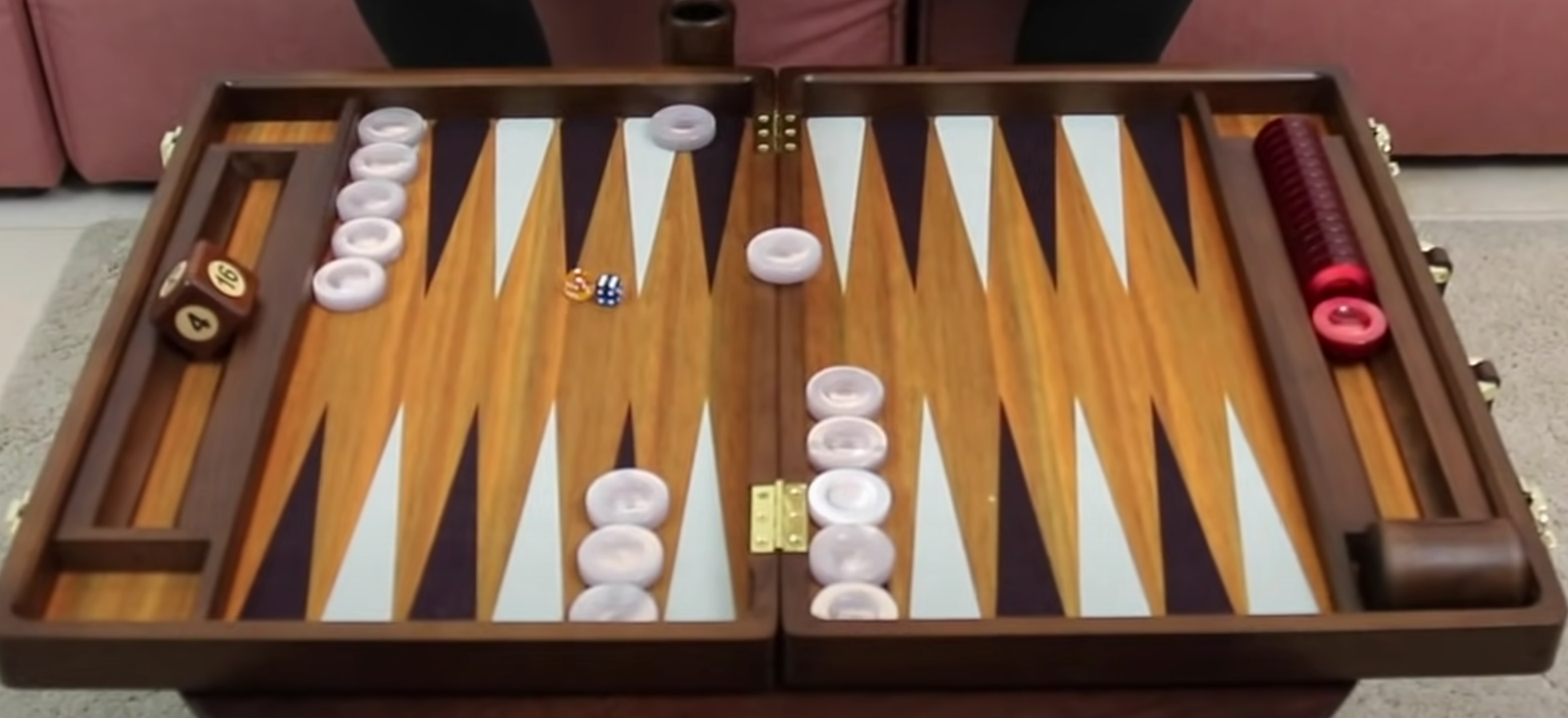Backgammon Rules
Hey there, everyone! I'm Marc Olsen, and today we're going to dive into the rules of backgammon.
The rules are actually quite straightforward. At its core, backgammon is a race – the first person to move all their 15 checkers off the board wins the game. This is where it all begins, and every backgammon game kicks off from this same setup.
Starting Position
The Dice
There are a few elements to keep in mind, starting with the fact that it's a dice game. Each player has two dice, and you'll roll these every turn. The outcome of the dice guides your moves. To get things rolling, we start by each rolling one die. So, for instance, if I rolled a four and you rolled an ace, I would take the lead because I got the higher roll. The rules prevent re-rolling – this isn't Turkish tavla, it's backgammon.
Now, if we happened to roll the same value, let's say both fours, we simply re-roll to break the tie. I'd still win if I got a six-four, and then I'd move a checker accordingly. One important thing about the dice is that you must use the values they show. No cherry-picking which die to move – both dice need to be put into play if you can legally use them. No sneaky moves where you only use one die – that's just not how the dice roll in backgammon!
Keep Your Checker Safe
Now, let's talk checkers and points. Those triangular shapes? They represent points. All 15 checkers are identical, and we start off with the same setup. It's pretty straightforward, really. The rules for checkers and points are simple: if a checker is alone on a point, it's in danger of getting hit. For instance, if you roll a three and a one, you can hit my lonely checker by moving it three spaces. It's a slick move since you'd get to hit me and send my checker to the bar. To come back into play, it has to make its way to your home board – starting all over again.
A lone checker
Another rule: if you have two or more checkers on a point, that point is yours. You've taken it. Your opponent can't land on it – they're blocked. If you roll 5-3, you wouldn't be able to move those checkers because it's blocked by my two checkers. This is why crafting a strong prime, like forming a "five prime" as a strategy, is smart. It blocks your opponent and limits their options. It's a neat trick, trust me.
Two checkers on a single point
Five prime
Let's move on to being hit and moving checkers. If I get hit, my checker heads to the bar. To re-enter the game, I have to start again in your home board before moving other checkers. So, if I roll a two and a one, I can enter with either one or both. Let's say I rolled double sixes – unlucky, right? But it happens. My checkers stay in the bar, and I have to bide my time.
When you trap an opponent's checker in the bar, you're in control. It's like a timeout for them while you race ahead with your other checkers. Once you've cleared the way, they'll re-enter from your home board.
Talking about the layout of the board, we have four quadrants: six points here, six points there – a total of 24 points. Your home board is where your hit checkers need to enter. It's also the threshold for bearing off checkers. To clarify, all 15 checkers must be in your home board before you start bearing them off. For instance, if you can't clear all your checkers into your home board, you can't start removing them from the board yet. You've got to get them all home first. Once they're in, you're good to start bearing them off, like when you roll a six.
Your home board
Bearing Off
Now, let's talk strategy. Rolling a six means you'll need to move your furthest back checker that's on a six point. It's mandatory. If you can't move a checker from the higher number rolled, then you move the highest checker on the next highest point that's open.
One more thing, there's this misconception about bearing off checkers. Some players believe you have to bear off a checker if you can. Not true! You can bear off any legal checker you want. As for the rule that you can't add more checkers to a point with five checkers on it – that's simply not accurate. You can stack as many as you want, but if space is tight, you can layer them on top of each other, so the round shapes are visible, and everyone can see how many are there.
Single, Gammon, Backgammon
Alright, now you're armed with the know-how to play backgammon. But wait, there's more! Backgammon's scoring isn't your typical win-or-lose setup. It's more complex – there are six possible outcomes. You can win or lose a single game, a double, or a triple. A double is called a gammon, and a triple is a backgammon. These twists make the strategy even more exciting. Sometimes it's worth pushing for a double or triple, adding an extra layer of fun to your play.
A triple means you've borne off all your checkers, while your opponent has one or more in your home board or on the bar. And remember, they haven't moved a single checker out yet. That's a triple – a pretty impressive win.
Triple (backgammon)
On the other hand, a double (or gammon) means you've borne off your checkers, and your opponent hasn't moved any checkers out yet. They're lagging behind. A triple is rare, happening around 1% of the time in computer matches and a bit more often with human players. Gammons are more frequent, at just under 30% of games.
Double (gammon)
But if it's a single game, it means we've both progressed in the race, but you still have one or more checkers out. Regardless of whether you've got one or 14 checkers out, it's still a single game – a point for me, and a point off for you.
Single
So, there you have it – the rules of backgammon. Now you're all set to dive in and play. Have fun!









